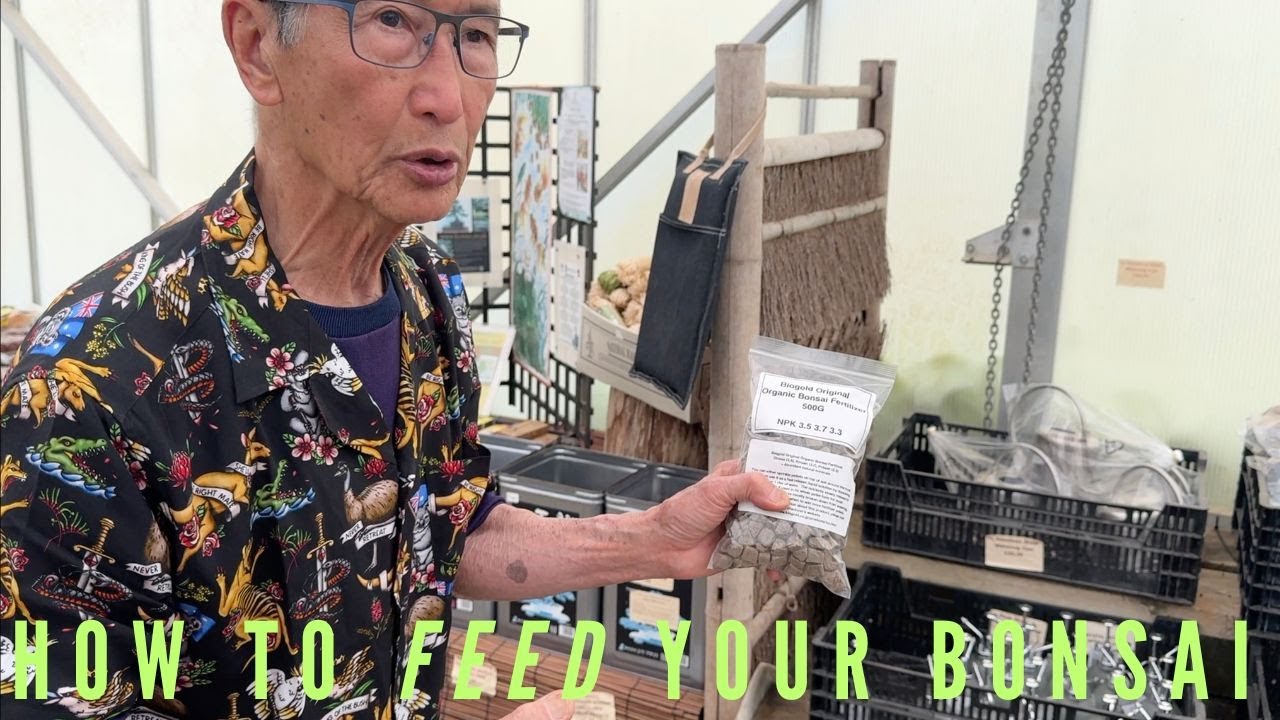We allow advertising on this website to support the blog. Some of content on this website was created with the help of AI.
When it comes to feeding a bonsai tree, one must understand the importance of providing proper nourishment for its growth and development. In this comprehensive guide, one will learn the essential steps to effectively feed their bonsai, ensuring its health and vitality for years to come.
Feeding Your Bonsai: A Step-by-Step Guide
Introduction
In the realm of bonsai cultivation, ensuring that your miniature trees receive the right nutrients is paramount for their health and vitality. The importance of feeding and fertilizing trees, especially during the British summer, cannot be overstated. Herons Bonsai, a renowned figure in the bonsai community, has created a video masterpiece delving into this crucial aspect of bonsai care.
Importance of Feeding Trees in Bonsai Cultivation
Feeding your bonsai trees regularly is akin to providing them with a balanced diet. Just like humans, trees need proper nourishment to survive and thrive. Without a steady supply of nutrients, trees can deteriorate and face the threat of eventual demise. Herons Bonsai emphasizes the significance of regular feeding to ensure the health and longevity of your precious bonsai collection.
Types of Fertilizers Used in Bonsai Care
Japanese and European brands of fertilizers are commonly employed in the meticulous care of bonsai trees. These fertilizers come in various forms, including liquid and solid, each with its unique benefits. Understanding the composition of fertilizers is crucial, as they usually possess a three-number formula known as NPK, denoting the levels of nitrogen, phosphorus, and potassium.
Nitrogen, Phosphorus, and Potassium: The Trio for Tree Health
Nitrogen serves as the catalyst for leaf growth, providing trees with the lush foliage that characterizes bonsai artistry. On the other hand, phosphorus and potassium play essential roles in strengthening the tree structure and contributing to vibrant autumn colors. A balance of these three elements is vital for optimal tree health and growth, ensuring that your bonsai thrives in all seasons.
Liquid vs. Solid Fertilizers: Choosing the Right Form
The debate between liquid and solid fertilizers rages on in the bonsai community. While liquid fertilizers offer convenient application and quick absorption into the soil, solid fertilizers are hailed for their potency and effectiveness. Fertilizer baskets add another dimension to solid fertilizer application, allowing for controlled release and precise feeding of your bonsai trees.
Tailoring Feeding Amounts to Tree Size and Vigor
Determining the appropriate amount of fertilizer for your bonsai trees depends on factors such as tree size and vigor. Smaller trees require lesser quantities of fertilizer, while larger, more robust trees may need a more generous feeding regimen. Herons Bonsai emphasizes the importance of adjusting feeding amounts based on individual tree needs to promote optimal growth and health.
Conclusion
Feeding your bonsai trees is not just a task but a nurturing ritual that fosters a deep connection with nature. By providing your miniature marvels with the right balance of nutrients, you are investing in their longevity and beauty. Herons Bonsai’s insightful video serves as a guiding light in the intricate art of bonsai feeding, empowering enthusiasts to embark on a fulfilling journey of tree care and cultivation.
FAQs:
- Why is feeding bonsai trees essential during the British summer?
- How do nitrogen, phosphorus, and potassium contribute to bonsai tree health?
- What factors should be considered when determining fertilizer amounts for bonsai trees?
- What are the advantages of using solid fertilizers over liquid alternatives in bonsai care?
- How can fertilizer baskets help in maintaining controlled feeding for bonsai trees?



